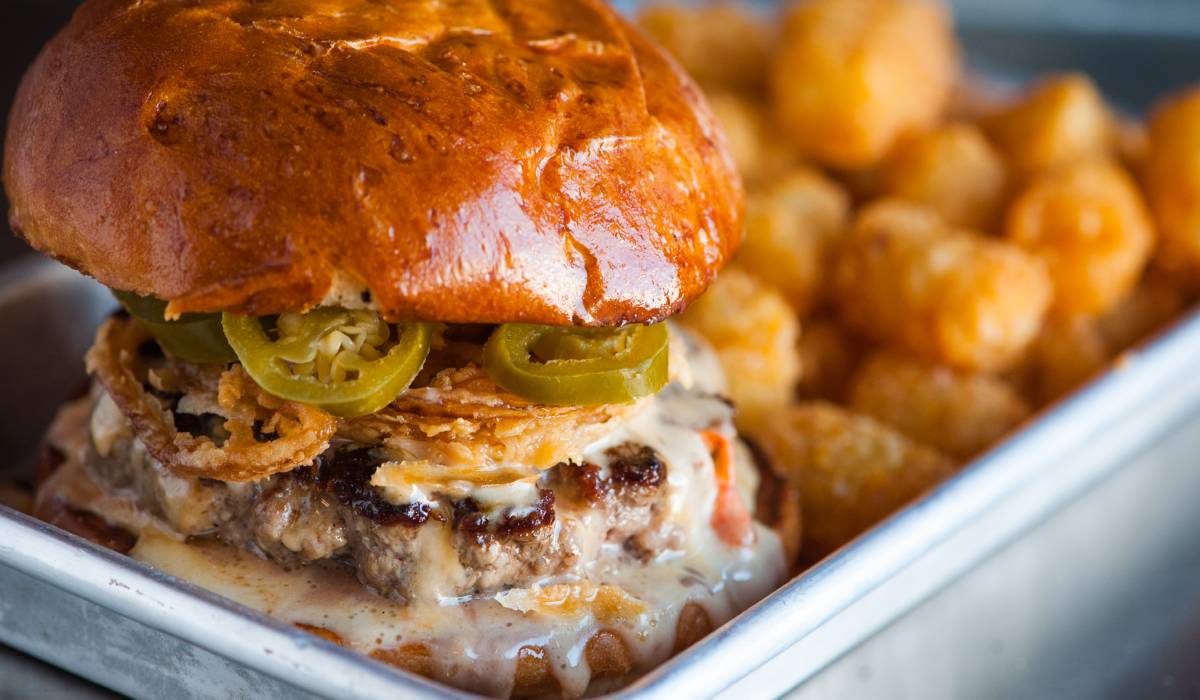Painless onboarding, seamless operations, significant results—ideally, operators looking to lessen their environmental footprints need sustainability programs that meet all three of these criteria. As the cofounder of San Francisco’s cult dining destination Mission Chinese Food, restaurateur Anthony Myint has ample experience with restaurant operations, and thus, was uniquely equipped to build a sustainability initiative that would fit operators’ needs. In 2015, Myint and his wife and business partner, Karen Leibowitz, founded Zero Foodprint, a nonprofit that supports regenerative agriculture. Straightforward and effective, Zero Foodprint leverages a 1 percent consumer upcharge on food and beverage purchases to provide grants for farmers looking to invest in eco-friendly farming practices.
“Needless to say, with chefs and restaurants, everyone’s kind of overwhelmed and looking a couple of hours ahead, maybe a couple of weeks ahead, but definitely not 20 years ahead,” Myint says. “People try to do their best and take care of their customers and the planet, but most people aren’t thinking, ‘Oh, let’s try to change the whole food system, let’s change how food is grown.’ People are thinking about how they can make a good choice within the current system.”
It goes without saying that sustainability is worth the industry’s attention. The environmental impact of the food industry is massive; according to Zero Foodprint’s website, the food system contributes close to half of greenhouse gas emissions around the world. And many consumers are interested in ways that foodservice can lessen its footprint. In 2021, Statista reported that a hefty 81 percent of Americans would like more food options that protect the environment, and 65 percent of Americans are willing to pay more at a sustainable restaurant.
Ingredients are largely responsible for the industry’s carbon footprint, which is why, initially, Myint and Leibowitz founded Zero Foodprint—in tandem with The Perennial, a concept that championed regenerative agriculture—with the purpose of convincing chefs and restaurants to shift to ingredients grown via regenerative methods. But this approach required considerable logistical planning and effort on the part of involved concepts. In 2020, Zero Foodprint partnered with the California Department of Food and Agriculture and the California Air Resources Board to develop its current approach.
“… What if, instead of buying the good stuff, you had a way where cool chefs, but also maybe even McDonald’s, were just sending a couple of cents per purchase—let’s say 1 percent of sales—to help a rancher change half of his growth,” Myint says of the program’s new approach. “It wouldn’t be predicated on logistics and trying to have small-scale processing and McDonald’s franchisees buying from that small butcher shop.”
READ MORE: Food Waste Comes Back Into Focus for Restaurants
Since its pivot to the 1 percent upcharge model in 2020, Zero Foodprint has awarded over half a million dollars to more than 30 farms to invest in improving agricultural approaches. Myint reports that the new iteration of Zero Foodprint has democratized the program, making it more accessible for quick-service and fast-casual concepts as well as fine dining.
Now, Zero Foodprint’s model is particularly suited to the fast-paced reality of quick-service operators. Rather than doing the legwork of building relationships with sustainable farmers and suppliers or re-allocating funds to support the purchase of more sustainably-grown ingredients, operators charge an extra penny per dollar on each customer purchase. For Wes Rowe, who owns and operates Wesburger, a San Francisco chain that serves up classic burgers and fries, integrating Zero Foodprint’s 1 percent upcharge into operations was a no-brainer.
“It just makes so much sense for us,” Rowe says. “It can be financially prohibitive to give back. In our case, switching to grass-fed beef is an extreme measure; our costs would go up and the customers would not appreciate that for the most part. So I think that this is a pretty genius way of creating change.”
Signs are placed within Wesburger that include information about Zero Foodprint and the resulting upcharge, but Rowe says that customers typically do not seem to read the signs or ask about the extra 1 percent. Like Rowe, Boulder, Colorado Subway franchisee Tim Schiel says that customers are typically willing to pay an extra penny on the dollar for Zero Foodprint’s efforts. Despite signage that explains the program as well as highlights the customer’s option to refuse the extra charge, he has not yet encountered a customer across his five stores who has opted out in the year since he integrated Zero Foodprint into his operations.
While Schiel’s units have actively composted and recycled for over a decade, he says that Zero Foodprint offers a less intensive way to boost the sustainability of his units. The program does not require extra customer or employee education on environmental efforts, and produces monthly revenues that Schiel sends to Zero Foodprint to distribute to farmers.
“In restaurants you’ll see a trash can, a recycling can, and a compost bin, and then you figure out what’s going where,” Schiel says. “And this is where that customer education comes in; the hardest part of the whole process of sustainability is educating the general public. So I’m trying to [implement Zero Foodprint] in such a way that I can prove to Subway corporate that this is a viable program.”
Schiel says he would like to see Zero Foodprint integrated into Subway locations across Colorado and the nation—a sentiment that is in line with Myint’s own optimism about the future of the initiative. Myint is hopeful that a nationwide fast-casual such as Chipotle or Shake Shack will apply the 1 percent upcharge for sustainability in the future, even if they choose to channel the earned funds back into causes independently of Zero Foodprint. With an approach that is non-invasive for restaurants and that requires little effort from operators, employees, and customers yet yields substantial returns, the odds of Zero Foodprint’s model catching on across fine dining, fast casual, quick serve, and other segments are high.
“You’re taking climate action,” Myint says. “You’re doing it not by planting a tree in Ethiopia, but by helping a local farm grow better food. So that should resonate. It’s almost like a table-to-farm movement instead of a farm-to-table movement.”










